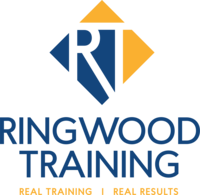
How do I become a electrical trades assistant?
Certificate II in Electrotechnology (Career Start)
- There are no mandated entry requirements.








Certificate IV in Electrical - Instrumentation
- Completed Certificate III in Electrotechnology Electrician or equivalent qualifications OR
- A current ‘Unrestricted Electricians Licence’ or its equivalent issued in an Australian state or territory.
 Meo Training
Meo Training
Advanced Diploma of Industrial Automation Engineering
- There are no mandated entry requirements.
 Engineering Institute of Technology
Engineering Institute of Technology
Certificate II in Computer Assembly and Repair
- There are no mandated entry requirements.


Certificate IV in Electronics and Communications
- There are no mandated entry requirements.



Bachelor of Engineering Technology (Mechatronics)
- There are no mandated entry requirements.
 Chisholm Institute
Chisholm Institute
Certificate I in ElectroComms Skills
- There are no mandated entry requirements.
 Taminmin College
Taminmin College
Related occupations
Instrumentation Technician
An Instrumentation Technician ensures automated equipment operates safely, performing installation, calibration, testing, and maintenance tasks.
Apprentice Electrician
An Apprentice Electrician repairs electrical systems, installs components, and works under guidance, requiring teamwork and attention to detail.
Electrician
An Electrician repairs, installs, and diagnoses electrical systems, ensuring safety and attention to detail while working in various settings.
Electrical Supervisor
An Electrical Supervisor oversees electrical circuit creation and maintenance, leading a team in telecommunications and power networks.
Electrical Fitter
An Electrical Fitter designs, installs, and tests electrical circuits, focusing on safety and technical accuracy, and works on both residential and industrial projects.
Electrical Linesman
An Electrical Linesman installs, inspects, repairs, and services overhead powerlines, working outdoors, focusing on safety, teamwork, and following technical specifications.
Rail Traction Linesman
A Rail Traction Linesman maintains and repairs electrical rail lines, working with overhead lines and cables, following safety procedures and solving technical issues quickly.
Cable Jointer
A Cable Jointer lays, joins, and repairs underground power cables, following safety procedures, working outdoors, and using strong technical skills in a team environment.
Substation Technician
A Substation Technician repairs and maintains power supply equipment, installs new systems, and inspects networks while ensuring safety and teamwork.
Power Systems Engineer
A Power Systems Engineer designs and maintains power supply infrastructure, ensuring safe and efficient operation of generation and distribution systems.
Systems Electrician
A Systems Electrician specialises in maintaining large network systems, performing scheduled repairs, inspections, and safety audits while ensuring compliance with safety procedures.
Electrical Estimator
An Electrical Estimator plans budgets for electrical projects, calculating costs for materials, labour, and equipment, ensuring compliance and accuracy.
Electrical Project Manager
An Electrical Project Manager oversees the design, installation, and operation of electrical systems, ensuring smooth project execution and problem-solving.
Signal Technician
A Signal Technician installs, maintains, and repairs railway signalling systems, ensuring proper function through inspections, testing, and adjustments.
High Voltage (HV) Substation Project Manager
A High Voltage Substation Project Manager oversees HV substation projects, coordinating resources, schedules, and budgets to ensure timely delivery.
Power Systems Technical Officer
A Power Systems Technical Officer supports the operation and maintenance of electrical power systems, ensuring efficient electricity distribution and collaborating with engineers to solve issues.
Fibre Optic Technician
A Fibre Optic Technician installs and maintains fibre optic networks, ensuring high-speed internet connectivity by troubleshooting issues and testing signal strength.
Fibre Optic Splicer
A Fibre Optic Splicer installs and repairs fibre optic cables, ensuring high-quality signal transmission and maintaining efficient communication networks.
Cable Technician
A Cable Technician installs, maintains, and repairs cable systems for telecommunications, internet, and television services. You might work in resi...
Senior Power Systems Operator
A Senior Power Systems Operator oversees electricity distribution, ensures grid stability, responds to outages, and collaborates with teams for safety.
Asset Inspector
An Asset Inspector evaluates machinery and property conditions, identifying defects and ensuring compliance while recommending maintenance actions.
Electric Vehicle Technician
An Electric Vehicle Technician repairs and maintains EVs, ensuring efficiency and safety while using specialised tools and knowledge.
Power Plant Operator
A Power Plant Operator controls and maintains equipment to generate electricity, ensuring safe operation and efficient power supply in various facilities.
Common questions
How much does an Electrical Trades Assistant earn?
In Australia, a full time Electrical Trades Assistant generally earns $1,200 per week ($62,400 annual salary) before tax. This is a median figure for full-time employees and should be considered a guide only. As you gain more experience you can expect a potentially higher salary than people who are new to the industry.
What are the job opportunities for an Electrical Trades Assistant?
This industry has experienced moderate employment growth over the last five years. There are currently 111,900 people working in this field in Australia, and many of them specialise as an Electrical Trades Assistant. Electrical Trades Assistants may find work across all regions of Australia.
Source: Australian Government Labour Market Insights
How do I become an Electrical Trades Assistant?
If you’re planning a career as an Electrical Trades Assistant, consider enrolling in a Certificate IV in Electronics and Communications. You’ll learn to assemble and repair a range of AV equipment, data systems, IT hardware and electronic devices. A Certificate II in Computer Assembly and Repair or Certificate II in Electrotechnology (Career Start) may also be appropriate.
Further reading


Most popular manufacturing courses
19th July 2022)

